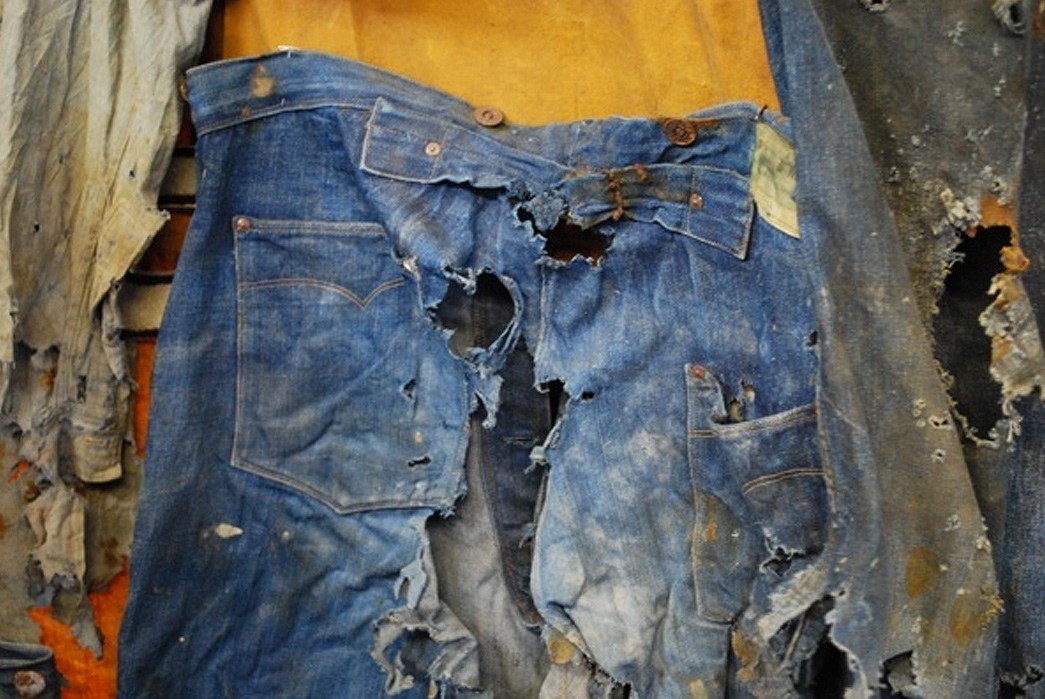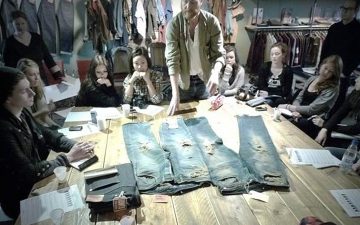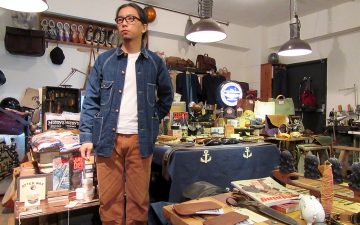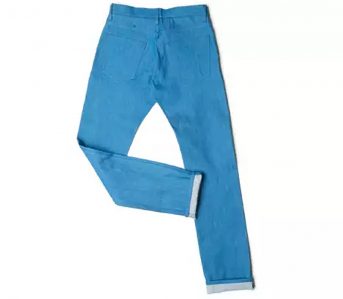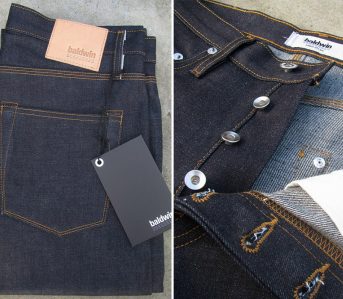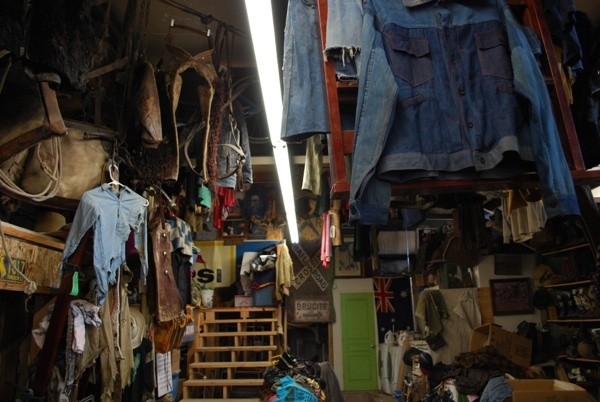
If you were to place the heart of the heritage fashion movement on a map, where would you pick? Los Angeles? New York? Tokyo? Red Wing, Minnesota? I’m willing to bet that more designers have been inspired and more brand identities have been shaped in the small mountain town of Durango, Colorado than any of the above cities.
For the past fifteen years, Durango has been the home of Brit Eaton—arguably the foremost “fashion archaeologist” in the world-and his company Carpe Denim, literally “seize the jeans”. Brit scours the attics of old farmhouses, ghost towns, and even abandoned mine shafts in the hunt for vintage clothing, particularly old denim.
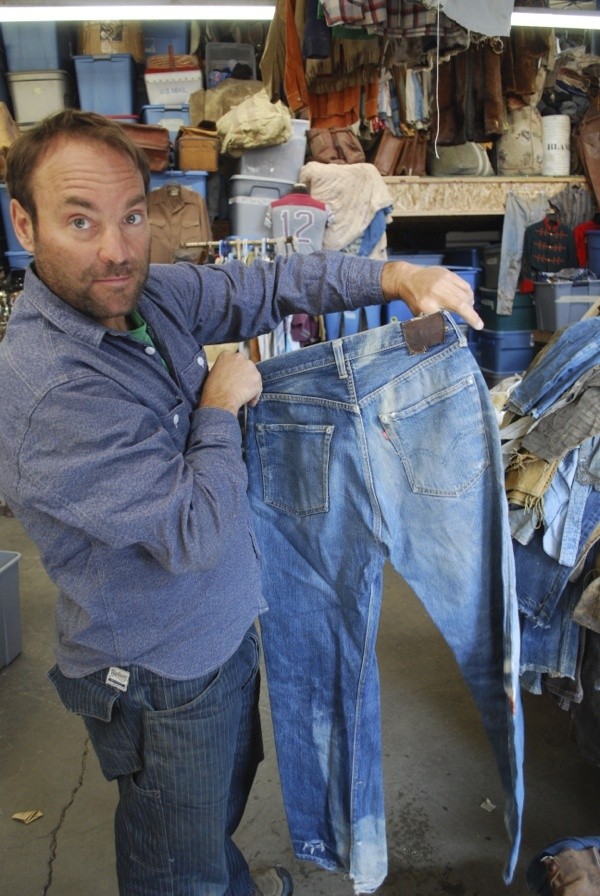
Brit with a pair of Levi’s he found stuffed into the insulation of an old house.
He’s sold his finds to labels like Levi’s, Ralph Lauren, Dickies, and many others for upwards of ten thousand dollars a piece. Without him, the Levi’s vault would be a far lonelier place than it is today.
We had the chance to talk with Brit about his history in the vintage business as well as tour some of his most prized finds in his sprawling Durango warehouse.
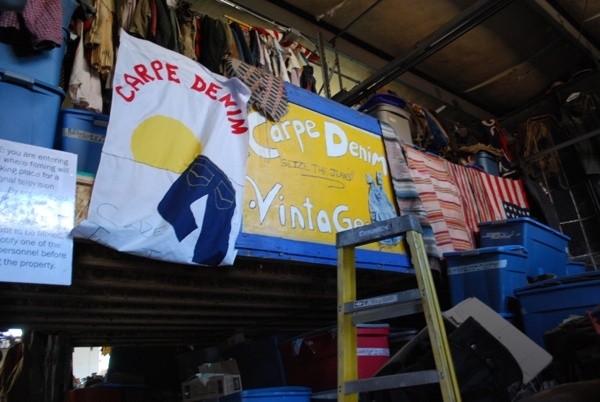
Carpe Denim
He stumbled into the vintage denim business while selling vintage Harley-Davidson’s in Europe in the early 90s. “I would ship a Harley over and just ride around until someone offered to buy it, always for at least twice what I paid. Then I would go back to the States and bring over another.” But his customers had other wants beyond bikes, “They would always tell me, ‘bring back some Levi’s next time, we want blue jeans!’”
This thought was fresh in his mind in 1997 when he found himself in possession a half-ton shrink-wrapped brick of used Levi’s,
When I sold the jeans at flea markets, I noticed vintage collectors digging through piles of Levi’s and pulling out the ones with the capital E on the back tab—they’d sometimes get in fights over them. That’s when I realized there might be some money in this stuff.
When Brit got seriously into the game in the late ’90s and early 2000s, there wasn’t a whole lot of competition and he could still happen upon a “big-game” find in a thrift store. The primary market for old jeans was with Japanese vintage collectors, “these guys would pay upwards of ten thousand bucks for a pair and wear these eighty to a hundred year old jeans on the street.”
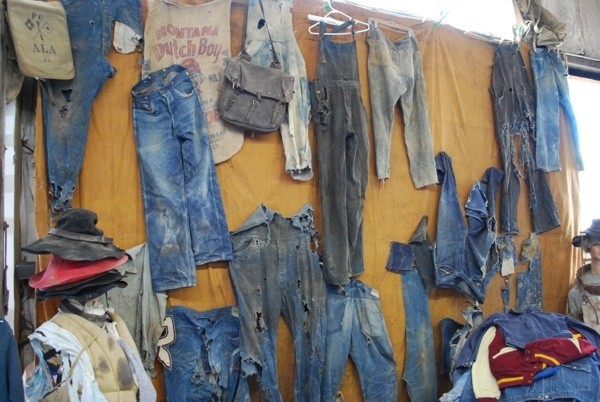
The wall of some of Brit’s best finds
But soon, the mainstream trends changed and the rest of the fashion world wanted a piece of the heritage action. Before, most of Brit’s clients were individuals who wanted the pieces for wearing or collecting.
Now, it’s almost all fashion brands that will use his finds as a pattern for modern reproductions. “In a way, I suppose we [vintage dealers] are digging our own grave by selling to designers.” He laughs, “But that’s the way the game has moved.”
Denim hunting nowadays requires much more skill and finesse than simply perusing the local Goodwill. Brit goes on what he calls “denim safari” about ten days a month. This could mean knocking on doors in a trailer park in Reno, digging through a barn in northern New Mexico, or spelunking an abandoned mine shaft in the Rocky Mountains.
He elegantly explains, “My gold is what the gold-diggers were wearing.”
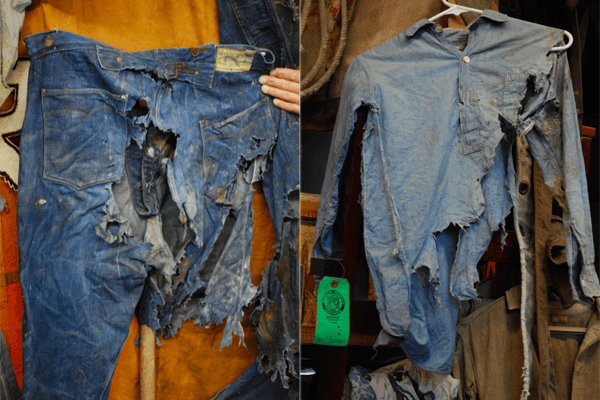
He recovered two of the rarest jeans of his career only a couple months ago – an 1880s vintage Levi’s 501 and, from previously unheard of brand, Jackson St. Overall Co. Both are still in wearable condition. Below is Brit and his 501s (he refused photos of the Jackson’s as someone could reproduce the details from a picture, but trust me, they were a sight):

“For Over 17 Years”
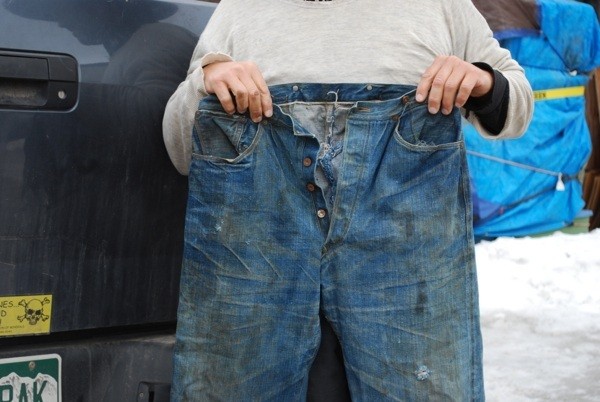
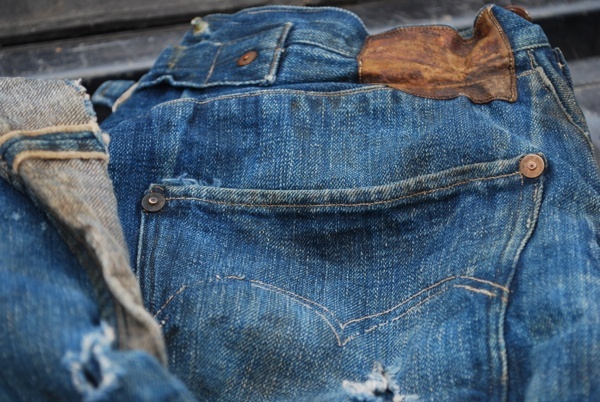
Brit’s as much a detective as anything and he’ll follow a promising lead anywhere. He once heard stories of a vast denim collection in a dentist’s office outside of Las Vegas. Brit faked a toothache so he could chat up the dentist before he started to haggle. You have to be daring to get the really good stuff.
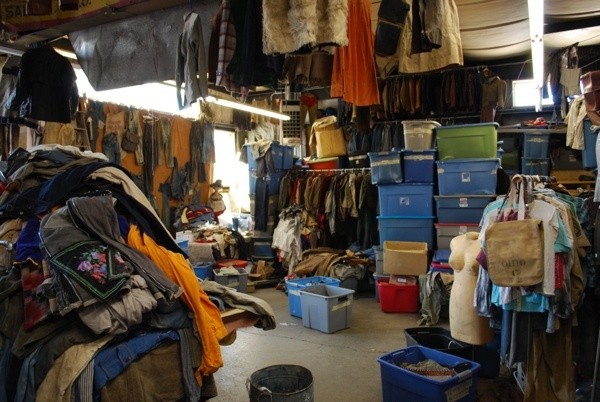
And good stuff – Brit has a lot of. His two-story warehouse is practically bursting at the seams with the past decade’s worth of hauls. A large section of the bottom floor is forty-gallon storage tubs stacked three high and five deep.
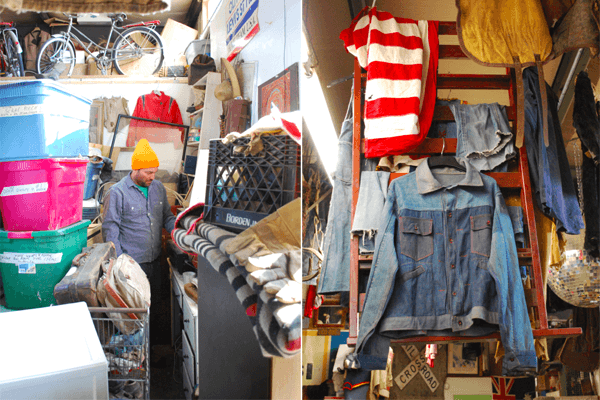
Brit was digging through the bins, pulling clothes for a designer flying in from New York in a couple days, “I don’t even know what’s in most of these.” He admits, “I’ll hide it from myself or I’ll post-date the labels to like 2015, because people won’t be ready for it until then. Anything marked ‘Insane’ means good.”
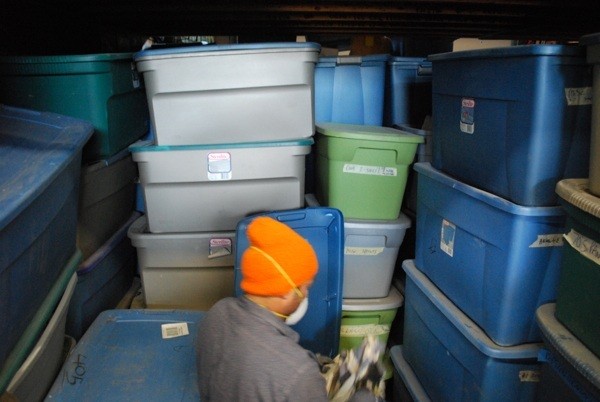
Brit sorting through his massive stockpile of old clothes.
Slowly rolling out this cache of clothes to designers and collectors almost makes Brit the unintentional de Beers of the fashion industry. After all, his work is living proof that denims are forever…
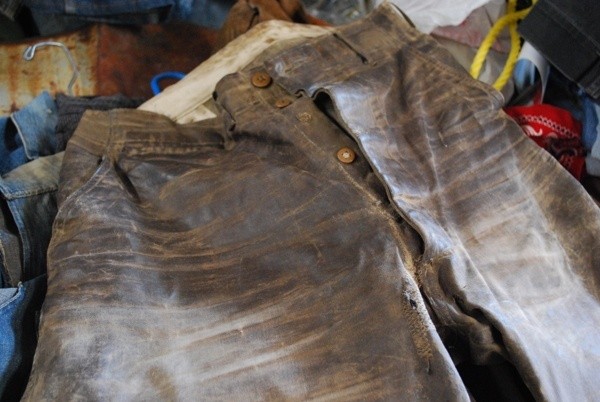
WWI-era waxed duck pants.
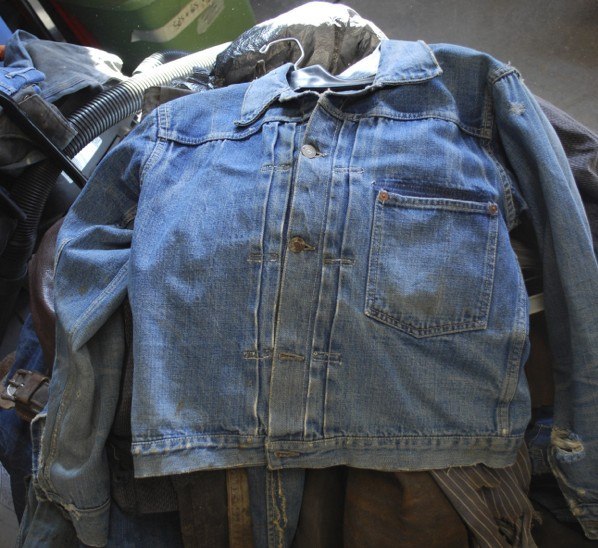
An original Levi’s Type I, before the pocket flap was added
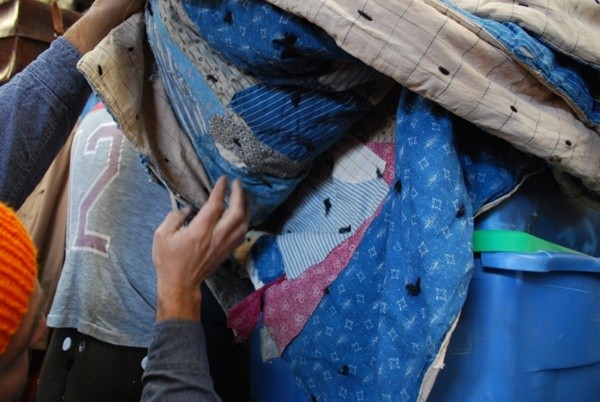
Vintage fabric swatches can sell for several hundred dollars a pop. Brit uncovered this patchwork quilt with over a hundred square feet of different patterns.
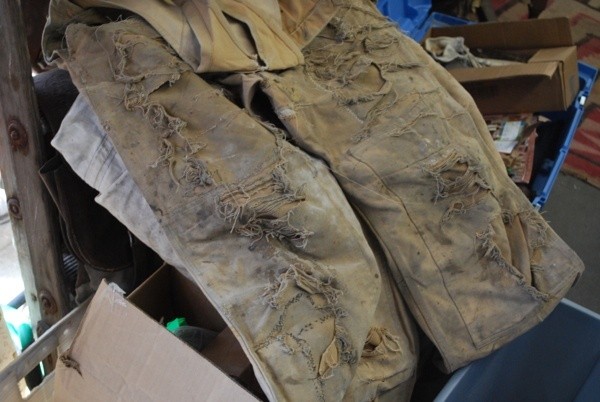
Carhartt double-knees that have been patched and worn to oblivion.
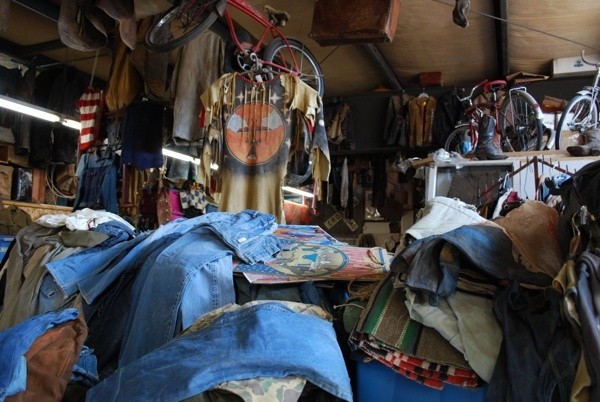
For more information on Brit, check out his website at www.carpedenim.com or read the full feature on one of his denim safaris from Outside magazine a few years back. And if you ever find yourself in Durango, Colorado be sure to check out his vintage store — he also sells futons!
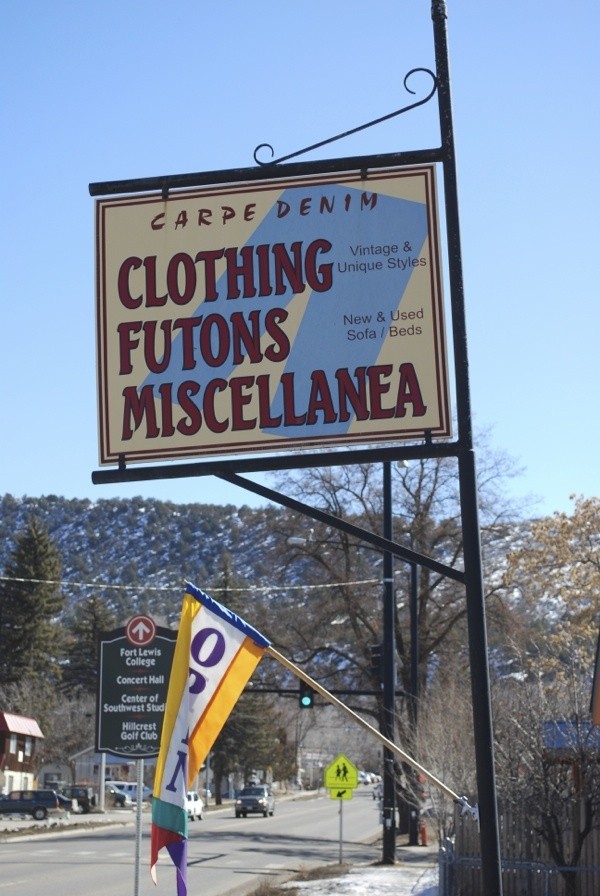
Brit Eaton’s Basics of Denim Dating
Achieving Brit’s level of knowledge of vintage clothing is something that takes years of practice to master, but he has a few quick tips on how to determine a jean’s approximate age:
1. On Levi’s, does it have a capital “E” on the back red tab? The jeansmaker switched to the lower case “e” in 1971.

2. Does it have a buckleback? Most jeans produced before WWII had a cinching buckle across the back waist.
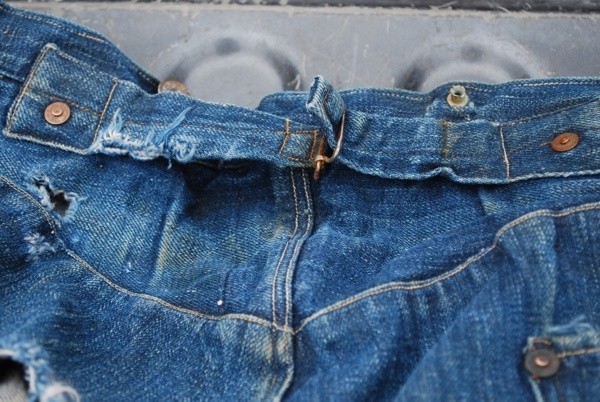
3. Does it have suspender buttons? Suspender buttons started to disappear from work pants in the early 1920s.
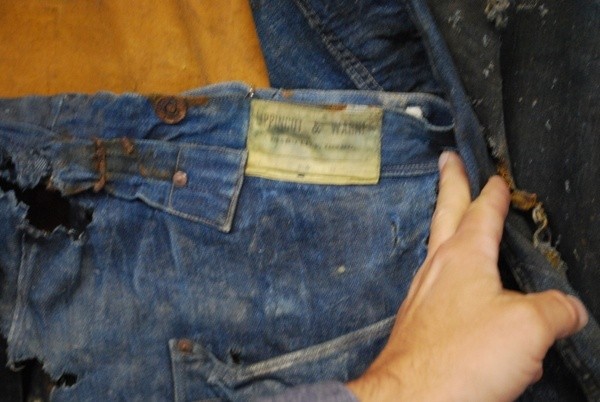
4. How many back pockets does it have? The original jeans from the late 1800s only had a pocket on the right hand side.
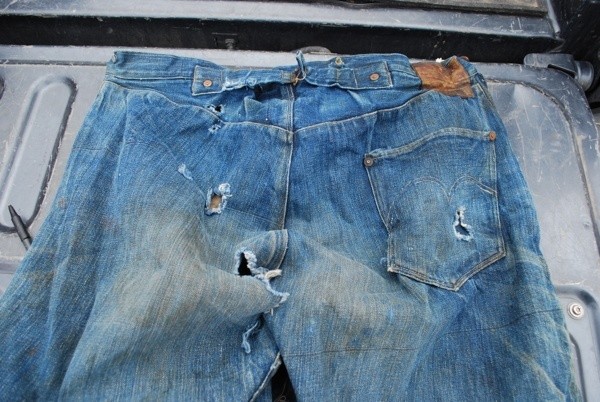
If you ever find an original pair that meets all of the previous criteria, handle with care. It’s probably worth more than your car!

